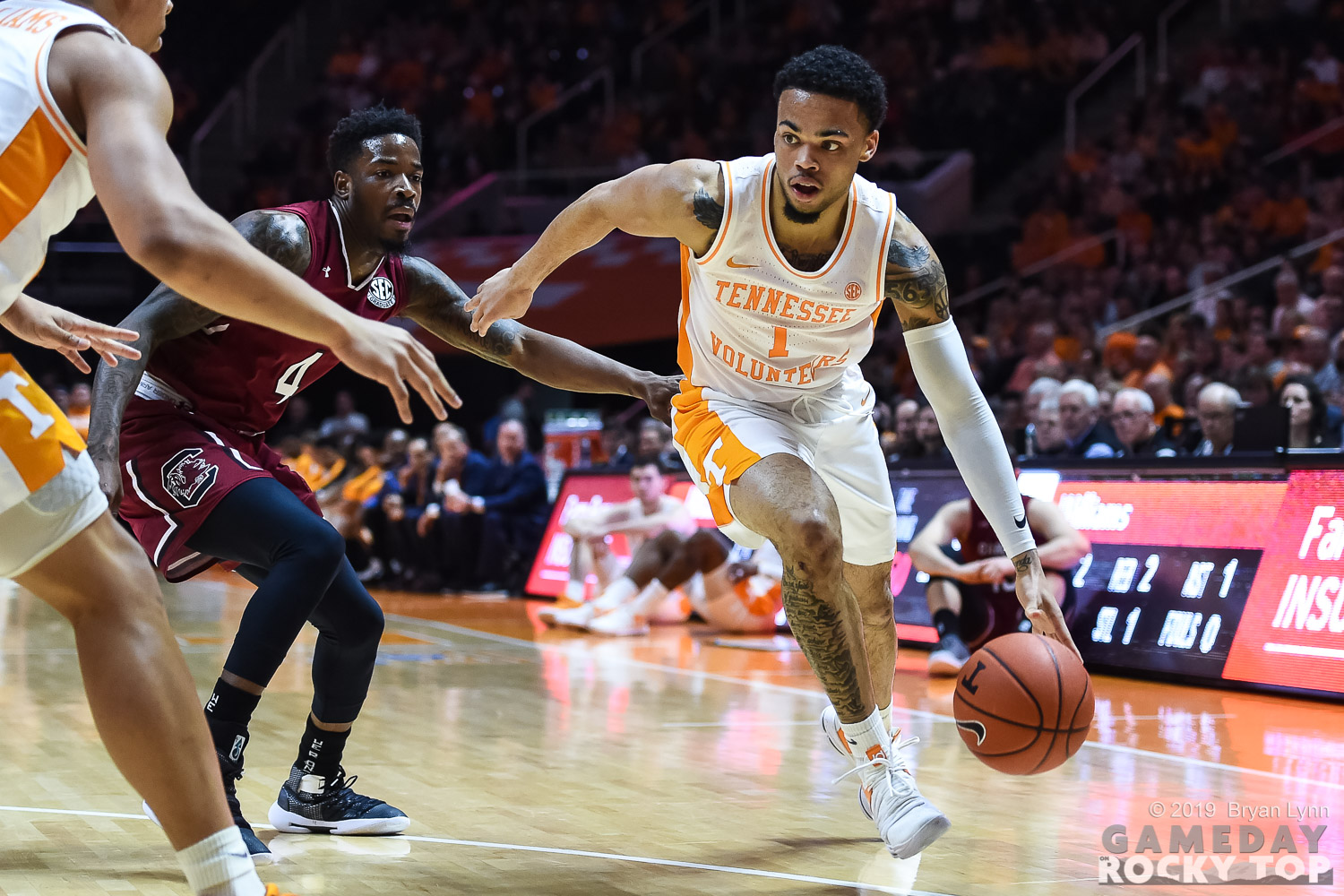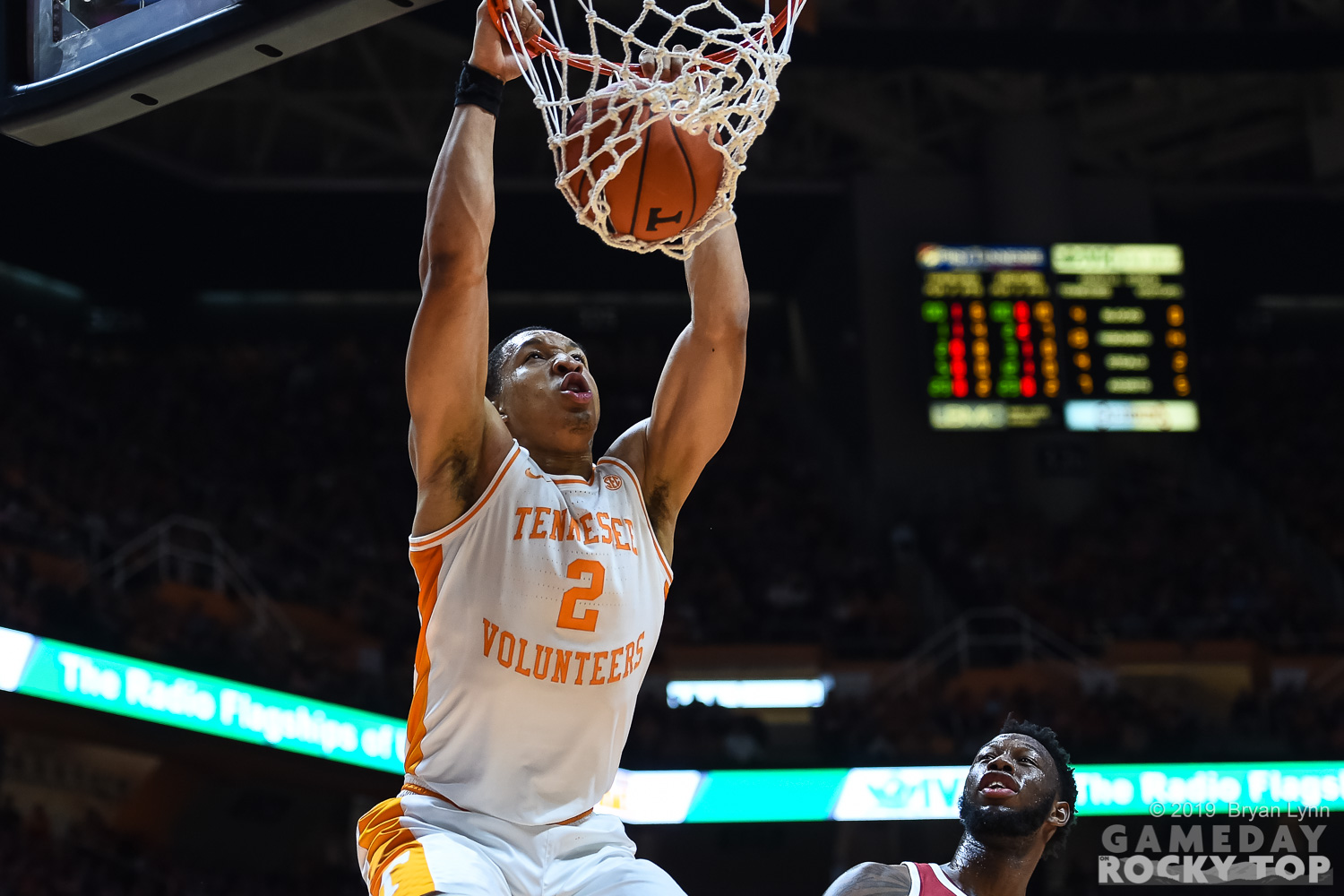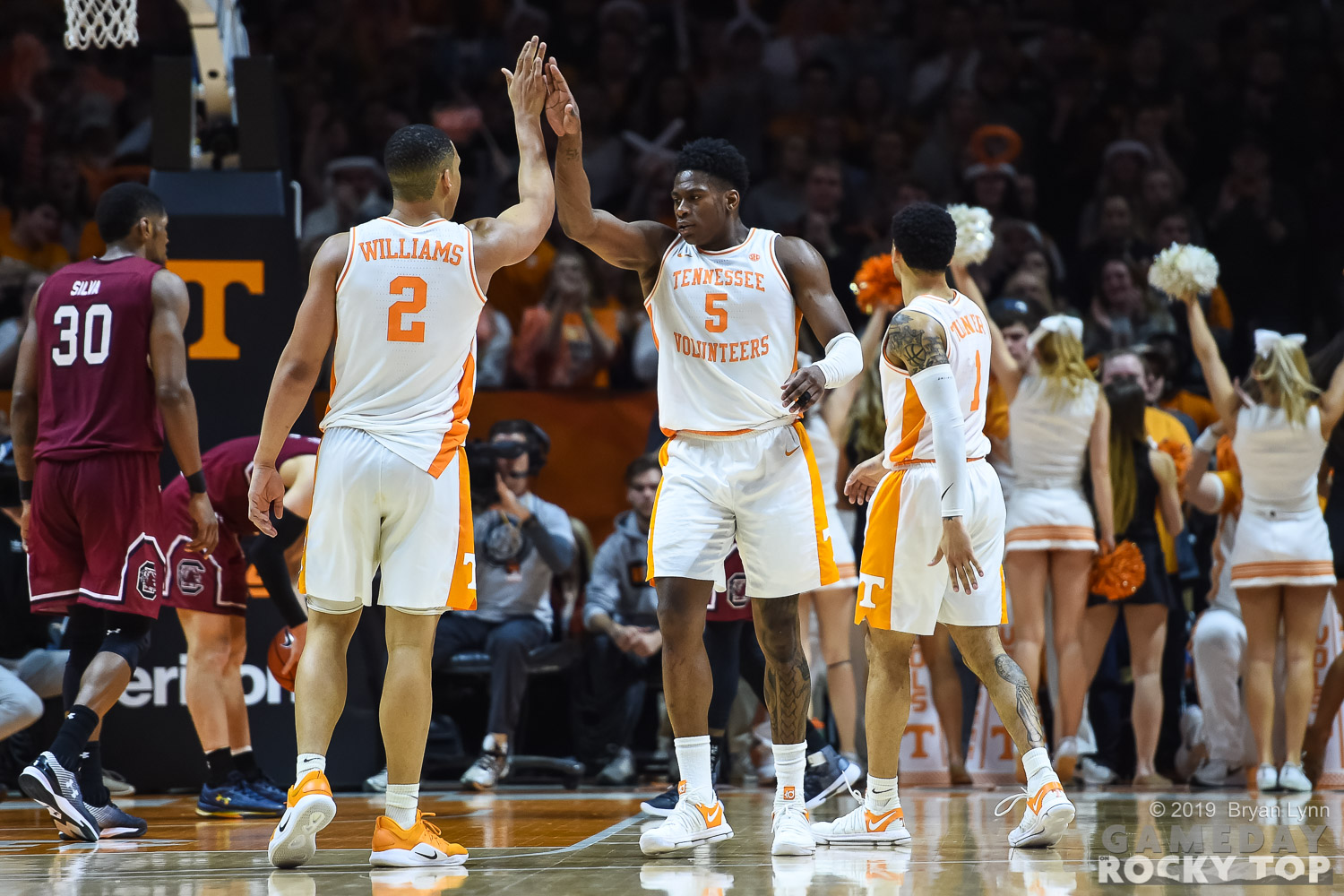Ten years ago at Rocky Top Talk, we asked you to pick your all-decade team for Tennessee Basketball. Chris Lofton was an automatic qualifier, and we went from there with these nominees:
- Point Guard: Tony Harris, C.J. Watson
- Perimeter: Vincent Yarbrough, Scooter McFadgon, JaJuan Smith
- Post: Isaiah Victor, Marcus Haislip, Ron Slay, Dane Bradshaw, Tyler Smith
- Center: C.J. Black, Brandon Crump, Wayne Chism
From 2000-09, Yarbrough and Haislip were the only Vols selected in the NBA Draft; the former played one year with Denver, the latter two seasons coming off the bench in Milwaukee before brief stints with the Pacers and later the Spurs. C.J. Watson was undrafted, but earned a 10-year career as a backup point guard, including a pair of lengthy playoff runs with the Bulls in 2011 and the Pacers in 2014.
So the biggest difference you’ll find in the all-decade conversation this time around is the NBA: four players drafted so far this decade, multiple possibilities to join them next month, and two guys with an outside chance to become Tennessee’s first NBA All-Star since Allan Houston.
2010-19 catches Bruce Pearl’s deepest tournament run, a Cuonzo Martin team with three NBA draft picks, and the Rick Barnes resurgence. It’s been a wild and enjoyable decade, and as such the candidates for an all-decade team make for an even more difficult conversation this time around. In chronological order:
| PG | G/F | G/F | F | F/C |
| B. Maze | S. Hopson | J.P. Prince | T. Harris | W. Chism |
| T. Golden | J. McRae | J. Richardson | J. Maymon | J. Stokes |
| J. Bone | K. Punter | A. Schofield | G. Williams | K. Alexander |
As was the case with Chris Lofton in the last decade, you feel like Grant Williams should be an automatic qualifier. But if you’re trying to construct an actual basketball lineup, and you consider the NBA ascent of Tobias Harris and Josh Richardson…can you put all three of those guys in your lineup with a point guard and a center? Can you go small with Williams at the five?
(It’s a hypothetical list, you can do whatever you want, but I’m just saying the choices are harder this time around…which was/is a good thing for Tennessee Basketball.)
A couple of observations:
This exercise will give you a greater appreciation for Jordan Bone. Bobby Maze averaged 9.4 points with a 3.2/1.4 assist/turnover ratio in 2010, and spent most of the decade widely regarded as Tennessee’s best point guard since C.J. Watson. If you wanted your point guard to score, that was Trae Golden: 13.3 points and a 38.8% three point shooter in 2012. And then Bone the last two years had the best of both worlds: 13.5 points last season with a 5.8/2.0 assist/turnover ratio, 38% from the arc in 2018, 35.5% in 2019.
No one took a higher percentage of shots in a Tennessee offense this decade than Scotty Hopson in 2011 (31.3%) and Jordan McRae in 2014 (31.4%). Hopson averaged 17.0 per game in 2011 with 37.6% from the arc. McRae averaged 18.7 in 2014 with 35.1% from the arc, and finished ninth in KenPom’s Player of the Year race that season, tying Grant Williams this season for the best finish for any Tennessee player. Then Kevin Punter put up the highest per game total of the decade in Rick Barnes’ first season: 22.2 points on 36.9% from the arc.
Man, who plays the three? If you allow for the NBA, it has to be Richardson, who led the Heat in scoring this season. If I asked you at any point during Richardson’s Tennessee career, even in the Donnie Tyndall season, if you thought he would lead an NBA team in scoring, what would your response have been? At Tennessee he made the best year-over-year growth of any four-year player I can ever remember: two points per game as a freshman to eight to ten on a Sweet 16 team as a junior, where he was probably the fourth option. Then he got himself to the pros with 16 points per game as a senior.
But how do you not put Schofield on your team? His individual performance against #1 Gonzaga is probably the best of the decade. I’m sure there’s some recency bias, but 16.5 points on 41.8% from the arc plus 6.1 rebounds per game? Did you know that percentage from the arc is the best for any Tennessee player this decade?
Or maybe if you’re trying to field the best basketball lineup, you sneak J.P. Prince in there and let him fill up the stat sheet while everyone else is focused on the other guys.
It’s the same conversation at the forward spot: if you value the NBA, you have to go with Tobias Harris right now. His one season in Knoxville saw 15.3 points and 7.3 rebounds per game in an offense where he and Scotty Hopson never really complemented each other well. Harris was great beyond his years in grabbing a rebound and going the length of the floor, getting around contact, and getting a bucket. But Grant Williams needs no introduction in this conversation. If you want to put them both on the floor at the same time, fine by me, but again, does it make basketball sense to play them and Richardson together?
If you were just picking your favorite player of the decade…has enough happened the last two years to move you off Wayne Chism? Maybe Schofield?
Honorable Mentions: If you want Brian Williams instead of Kyle Alexander as your third center nominee, it won’t hurt my feelings; I went Alexander because he’s second all-time in blocked shots at UT. Robert Hubbs, one of the players we probably spent the most word count on during his career, gets edged out in both of the guard/forward spots. And Lamonte Turner and Jordan Bowden could both work their way into a different version of this conversation if we remember them even more fondly with a big season in 2019-20.
If we let these guys step out of the roles they played at Tennessee, a lineup of Bone, JRich, Grant, Tobias, and Chism both captures the decade well and wins a bunch of games. Using the above categories to put them in the roles they played at UT, I think I’d go Bone, McRae, Admiral, Grant, and Chism, with the eventual NBA studs coming off the bench.
Who ya got?







